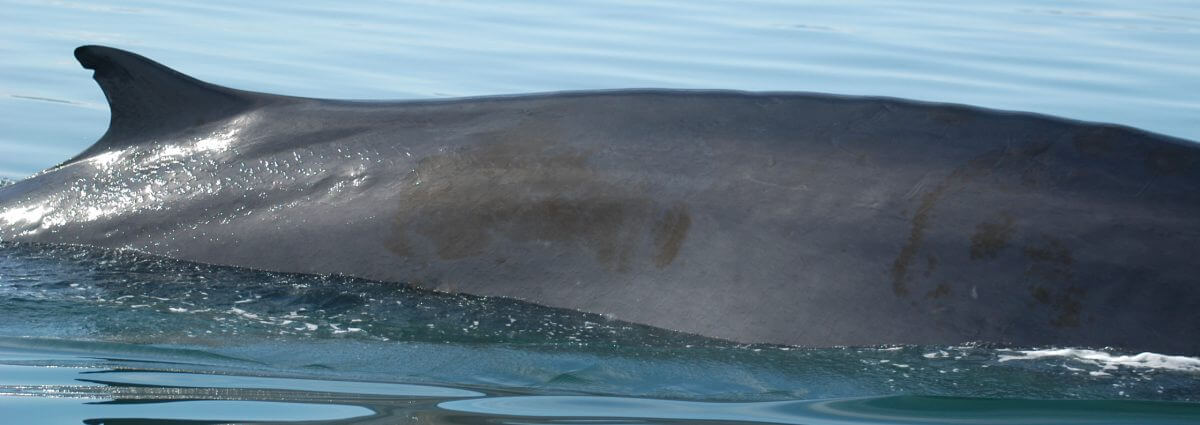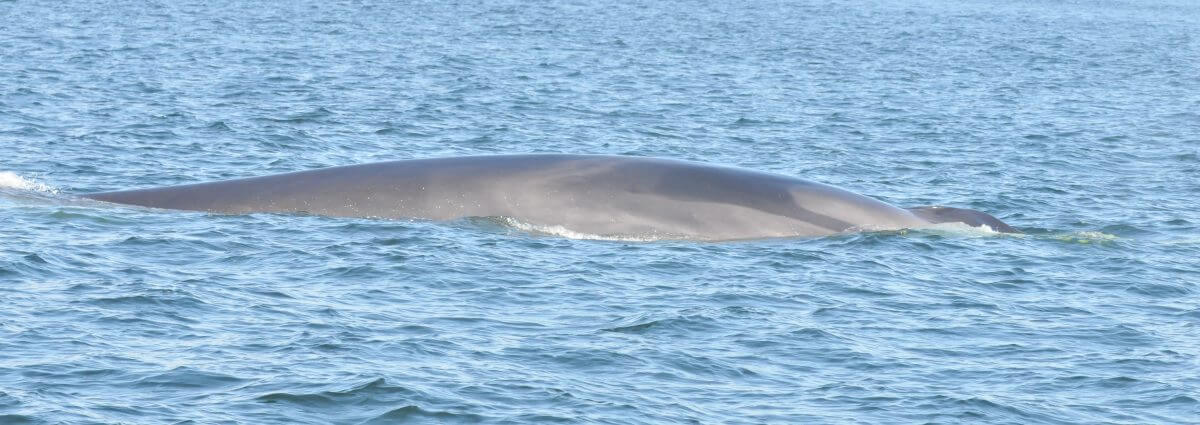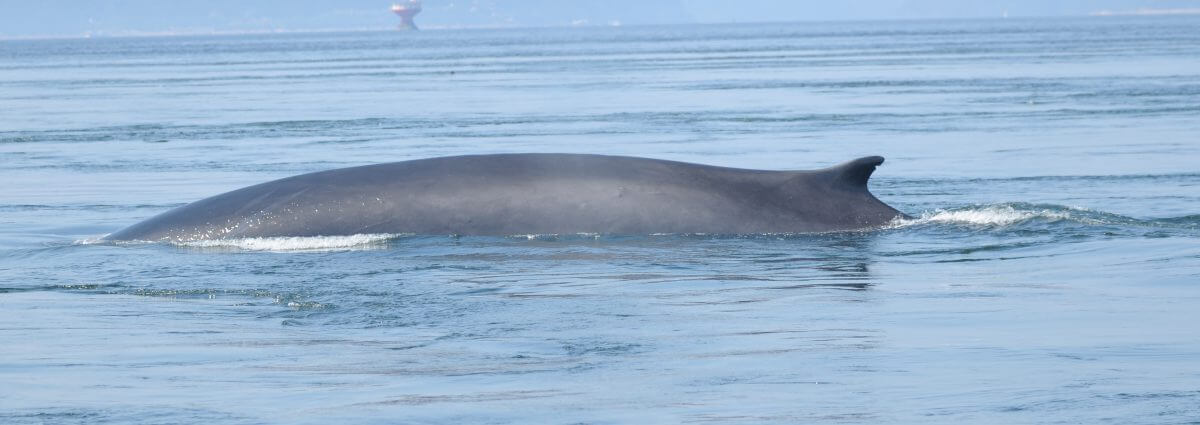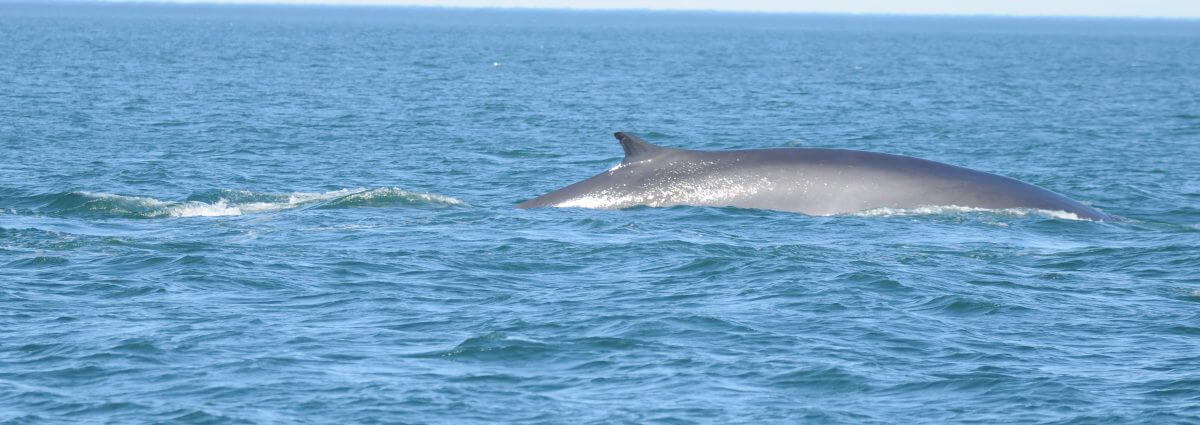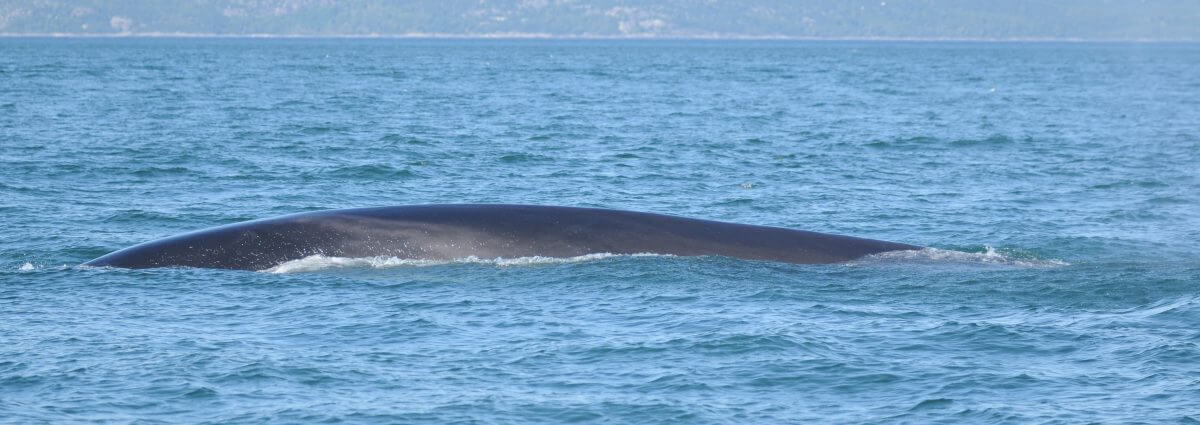Triangle
Fin Whale


-
ID number
Bp028
-
Sex
Female
-
Year of birth
Unknown
-
Known Since
1986
Distinctive traits
This female fin whale owes her name to the triangular notch located near the tip of her dorsal fin.
Her contrasting chevrons also feature a pattern that makes her easy to identify.
Life history
Triangle frequently visits the estuary, but her presence is difficult to predict. In fact, several years may pass between sightings in the area.
She has been spotted three times with a calf in the estuary, in 1988, 1991, and 2000. However, she has not been seen with a calf since then. Did she take her calves to other feeding grounds? Or were they weaned by the time she returned to the estuary? The mystery remains unsolved to this day…
Observations history in the Estuary
Years in which the animal was not observed Years in which the animal was observed
Latest news from the publications Portrait de baleines
A dorsal fin with a triangular notch surfaces amid the blows and black backs; the female fin whale Triangle has been spotted several times this summer in dynamic groups off Tadoussac. This regular visitor has been known to make sporadic appearances in the estuary since 1986. Since then, she has been seen three times with a calf, in 1988, 1991, and 2000. However, since 2000, she has not been seen with a young calf. Yet, fin whales give birth every two or three years. What is happening with Triangle?
After a gestation period of 11 to 12 months, fin whale calves are born between November and January. Lactation lasts about six to seven months, and once the calf is weaned, it is independent. The calves seen in the estuary are possibly young whales born late in the season and for whom the nursing period is coming to an end. Otherwise, they may be calves that are already weaned and independent. In fact, researchers must observe the same adult swimming with the calf several times before confirming that it is the mother, as weaned calves are often accompanied by different adults during the course of a single day. Caïman, Capitaine Crochet, Perroquet, Corsaire, and James Bond have been recognized as mothers of calves by the GREMM team since 1988. Of course, a nursing scene or genetic analysis can confirm any doubts surrounding kinship. So perhaps Triangle has taken her calves to other feeding grounds over the past ten years… Or perhaps they were already weaned when she returned to the estuary? The mystery remains.
According to GREMM’s research since the 1980s, none of the fin whale calves photographed in the estuary have been recognized as adults. This may be because they did not return, or because they changed. Indeed, their bodies change significantly during the transition to adulthood, and the chevron, or color pattern behind the head, fades with age.

